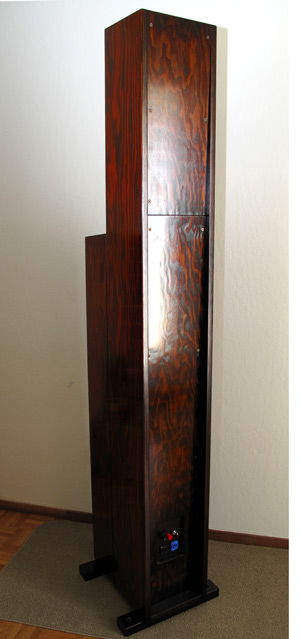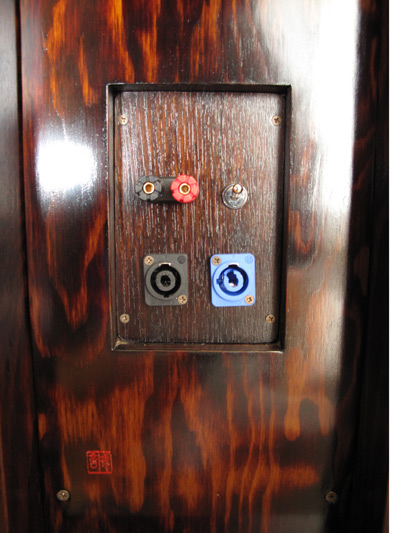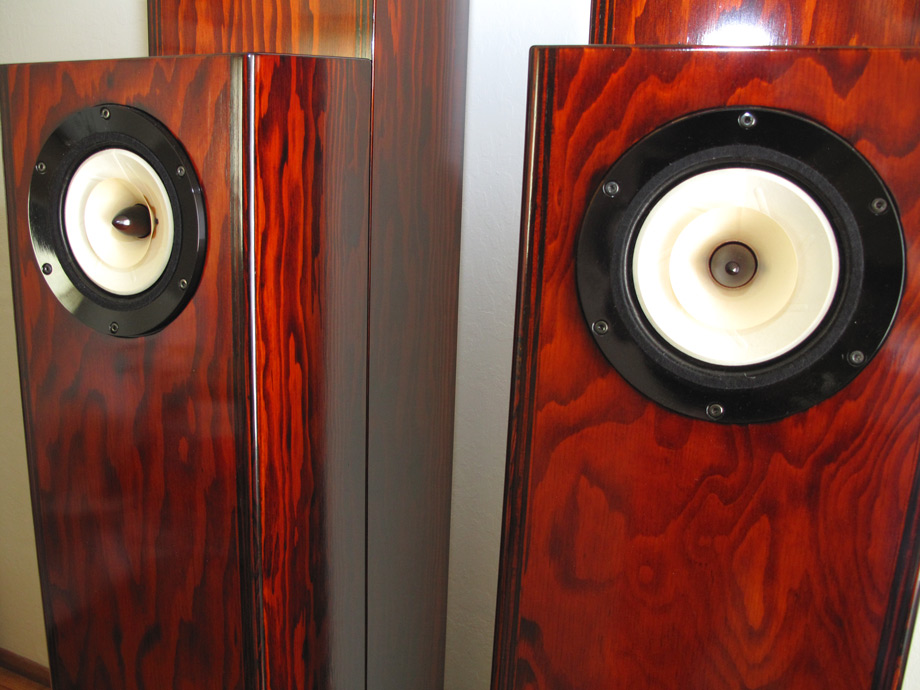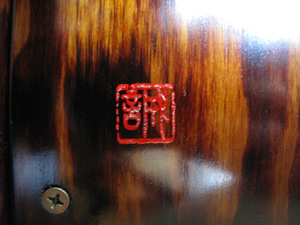New Craving
The mere presence of a super-sensitive speaker would be more than enough for the most diligent among us to do an about face in amplification choice and rekindle our devilish fantasy for a 3-watt SET amplifier. Well, as a former owner of one of the best SET amplifiers, the Harmonix Reimyo PAT-777, I did not find my listening experience shortchanged with either the Audio Tekne TFM-9412 or the Pass Labs XA100.5 monoblocks. Because long-term exposure to the Feastrex nourished my craving for audiophile recordings with airy highs, sparkling midrange, realistic dynamics and lifelike dimensionality to the nth degree. The Acapella La Muskia Reference speaker cable empowered weightier and more developed presentation both spatially and tonally through the Feastrex, while the Wireworld Platinum Eclipse Reference indulged my frenzy for the Feastrex transparency with tonality that was a little leaner and a soundfield that was a less spacious but a little more exacting. Both, at the end, were considerably superior to my Audio Note AN-SPx.
Although conventional, proven wisdom taught us that low-wattage SETs should always be preferred when driving high-sensitivity speakers so as to harness the uniqueness of the SET, in the Feastrex’s case, that would be an oversimplification. The Audio Tekne, despite not being an SET but a push-pull design, was nonetheless perfectly complimentary in inducing magically layered and rich midrange from the Feastrex, breathing new life into standard classical repertoire, such as the Carlos Kleiber standard of Beethoven Symphony No. 5 on Deutsche Grammophon. Also accompanying this utter sonic serenity was a weightier bottom-end atypical of tube amplification, culminating in an amplifier/speaker package that was immensely satisfying.
New State of Sound

I felt initially worrisome driving the Feastrex with the Pass Labs solid-state behemoths, never mind they also operated in pure class A. The revelation here was the resolution the Pass Labs brought to the party, and how very condensed a sonic picture each of the first watts had compelled the Feastrex to create. Whether it was the incessant electric bass guitar of the Metallica or the divine vision of Dame Kiri TeKanawa in her rendition of Heaven in Mahler’s Symphony No. 4, there was not a moment of derelict indiscreetness in the most comprehensive and exacting reenactment in the mood and intensity of the moment. It was presumably the result of a high-density paper fiber cone being propelled by an otherworldly massive magnetic construct, being infused in turn with pure class A power.

Speaking of Fundamentals
On the other hand, the bottom-end of the Feastrex would not impress audiophiles looking for the most miraculous and mind-numbing bass prowess in a single-driver design. I did experience upper 40Hz bass attacks in surprising weight and definition, namely from Telarc CDs and a few other Electronica tracks. It seems to me that in my search for the most definitive and realistic bottom-end performance in loudspeakers in the confines of my home, either via active servo subwoofers, planar woofers, 15-inch woofers in ported cabinets, corner horns, small-diameter drivers in pseudo bass horn configurations, et cetera, I continuously find myself circling back to what the MaxxHorn Immersion has accomplished, namely a tractrix horn-coupled forward-firing, small diameter single-driver system. In such concoction, the integration was breathtaking and the coherency was to die for, although the resultant bottom-end from such method would not satisfy the 18Hz, earth-quaking bass enthusiasts. We Californians are never too caught up about those anyway.
In retrospect, though not a horn, the Feastrex Makoto loudspeaker system had even more breathtaking presentation than the MaxxHorn, surpassing the latter with faster dynamic transients, tracking each and every instrument’s intrinsic dynamic characteristics leisurely but masterfully. For the playback of jazz music, the Feastrex dazzled me; especially audiophile quality jazz. One listen to the Feastrex playing “Jazz Patrol” from DMP Record’s 1988 Further Adventures by Film & The BB’s and you will lament on the slowness of all speakers before it. The saxophone sounded so agile and free, the instrument took on a life of its own through the Feastrex, and it was fun, real, intoxicating, and wonderfully musical. With the Feastrex, I felt I’ve reached the ultimate limit in transient surrealism in hi-fi.
Tonal coherency has always been an advantage of single-driver speakers due to the lack of crossover-induced colorations and phase shifts. Reproduction of vocals and single instruments through the Pass Labs/Feastrex was particularly vibrant, full of nuances that would morph the air between you and the speakers into a world of its own. I closed my eyes in every session and the softness of human vocals would penetrate the air with the lightness and totality of it. Of course, if you are used to the big, 15-inch Dual-Concentric way of sound propagation, or the myriad of mid-bass, midrange, tweeter and super-tweeter in action producing the human voice, you could easily feel shortchanged.
Asking an audiophile cultivated in the sentiments of multi-driver audiophilia to appreciate the sound of the Feastrex is like asking someone who’s fixated on super-rich bisque to render judgment on a hasty tasting of the Japanese Miso soup: the latter would taste bland like water. I spent over a month getting used to the Feastrex method, and I found refuge in its effortless presentations. The Feastrex sought not to convey an enveloping wall of music, nor did it convey heightened tonal vividness; yet, few speakers can match the Feastrex’s effortless transients and texturing, or the way it gently caresses your sensibility and put music forth subliminally. It was a stunning exercise of the ideal of producing the most truthful, expeditious dynamics and tonality of instruments with the smallest of driver.
- ← Previous page
- (Page 3 of 4)
- Next page →



Thanks for the info on Feastrex. Their site does not list their speakers or prices. At $5k for their cheapy speakers it is within the realm of possibility I could get a pair. I just bought a pair of Coral Flat 8 drivers that I intend to put in single driver boxes. They are 40 or 50 years old. I lived in Japan for 6 years, learn to speak Japanese, so I came to understand their rabbit attention to detail in a lot of the stuff they do. I intend to go back now that I am retired and find Technical Brain and Air Tight amps I can afford used in Akihabara. Your writing was a pleasure to read. I think even rich people want to believe they are getting good value for money. Japanese lacquer is pretty, especially nice in Kamakura. Cheers